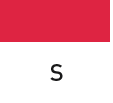H4C5H4 clustered histone 5
Autism Reports / Total Reports
5 / 6Rare Variants / Common Variants
12 / 0Aliases
-Associated Syndromes
-Chromosome Band
6p22.2Associated Disorders
-Relevance to Autism
De novo coding-synonymous variants in the H4C5 gene were identified in ASD probands from the Simons Simplex Collection, the Autism Sequencing Consortium, and the MSSNG cohort (Iossifov et al., 2014; Yuen et al., 2016; Satterstrom et al., 2020), while an inherited frameshift variant in this gene was observed in two ASD-affected siblings from a multiplex family in the iHART cohort (Ruzzo et al., 2019). Tessadori et al., 2022 reported individuals with de novo missense variants in the H4C5 gene presenting with a neurodevelopmental syndrome characterized by intellectual disability and developmental delay; two of these individuals also presented with autism spectrum disorder. Additional functional assessment of H4C5 missense variants in zebrafish embryos in this report demonstrated developmental defects in embryos expressing mutant H4C5 compared to wild-type protein for many of the missense variants tested, including those observed in the two individuals with autism spectrum disorder.
Molecular Function
Histones are basic nuclear proteins that are responsible for the nucleosome structure of the chromosomal fiber in eukaryotes. Two molecules of each of the four core histones (H2A, H2B, H3, and H4) form an octamer, around which approximately 146 bp of DNA is wrapped in repeating units, called nucleosomes. The linker histone, H1, interacts with linker DNA between nucleosomes and functions in the compaction of chromatin into higher order structures. This gene is intronless and encodes a replication-dependent histone that is a member of the histone H4 family. Transcripts from this gene lack polyA tails but instead contain a palindromic termination element. This gene is found in the large histone gene cluster on chromosome 6.
SFARI Genomic Platforms
Reports related to H4C5 (6 Reports)
| # | Type | Title | Author, Year | Autism Report | Associated Disorders |
|---|---|---|---|---|---|
| 1 | Support | The contribution of de novo coding mutations to autism spectrum disorder | Iossifov I et al. (2014) | Yes | - |
| 2 | Support | Genome-wide characteristics of de novo mutations in autism | Yuen RK et al. (2016) | Yes | - |
| 3 | Primary | Inherited and De Novo Genetic Risk for Autism Impacts Shared Networks | Ruzzo EK , et al. (2019) | Yes | - |
| 4 | Support | Large-Scale Exome Sequencing Study Implicates Both Developmental and Functional Changes in the Neurobiology of Autism | Satterstrom FK et al. (2020) | Yes | - |
| 5 | Recent Recommendation | - | Tessadori F et al. (2022) | No | ASD, epilepsy/seizures |
| 6 | Support | - | Borja N et al. (2023) | Yes | - |
Rare Variants (12)
| Status | Allele Change | Residue Change | Variant Type | Inheritance Pattern | Parental Transmission | Family Type | PubMed ID | Author, Year |
|---|---|---|---|---|---|---|---|---|
| c.95A>C | p.Lys32Thr | missense_variant | De novo | - | - | 35202563 | Tessadori F et al. (2022) | |
| c.98C>G | p.Pro33Arg | missense_variant | De novo | - | - | 35202563 | Tessadori F et al. (2022) | |
| c.106C>T | p.Arg36Trp | missense_variant | De novo | - | - | 35202563 | Tessadori F et al. (2022) | |
| c.113T>C | p.Leu38Pro | missense_variant | De novo | - | - | 35202563 | Tessadori F et al. (2022) | |
| c.121C>T | p.Arg41Cys | missense_variant | De novo | - | - | 35202563 | Tessadori F et al. (2022) | |
| c.136C>T | p.Arg46Cys | missense_variant | De novo | - | - | 35202563 | Tessadori F et al. (2022) | |
| c.295T>C | p.Tyr99His | missense_variant | De novo | - | - | 35202563 | Tessadori F et al. (2022) | |
| c.67C>T | p.Leu23= | synonymous_variant | De novo | - | - | 31981491 | Satterstrom FK et al. (2020) | |
| c.295T>C | p.Tyr99His | missense_variant | De novo | - | Simplex | 36987712 | Borja N et al. (2023) | |
| c.102C>T | p.Ala34= | synonymous_variant | De novo | - | Simplex | 27525107 | Yuen RK et al. (2016) | |
| c.63G>A | p.Lys21= | synonymous_variant | De novo | - | Simplex | 25363768 | Iossifov I et al. (2014) | |
| c.245_282del | p.Val82GlyfsTer? | frameshift_variant | Familial | Maternal | Multiplex | 31398340 | Ruzzo EK , et al. (2019) |
Common Variants
No common variants reported.
SFARI Gene score
Syndromic


Score Delta: Score remained at S
criteria met
See SFARI Gene'scoring criteriaThe syndromic category includes mutations that are associated with a substantial degree of increased risk and consistently linked to additional characteristics not required for an ASD diagnosis. If there is independent evidence implicating a gene in idiopathic ASD, it will be listed as "#S" (e.g., 2S, 3S, etc.). If there is no such independent evidence, the gene will be listed simply as "S."